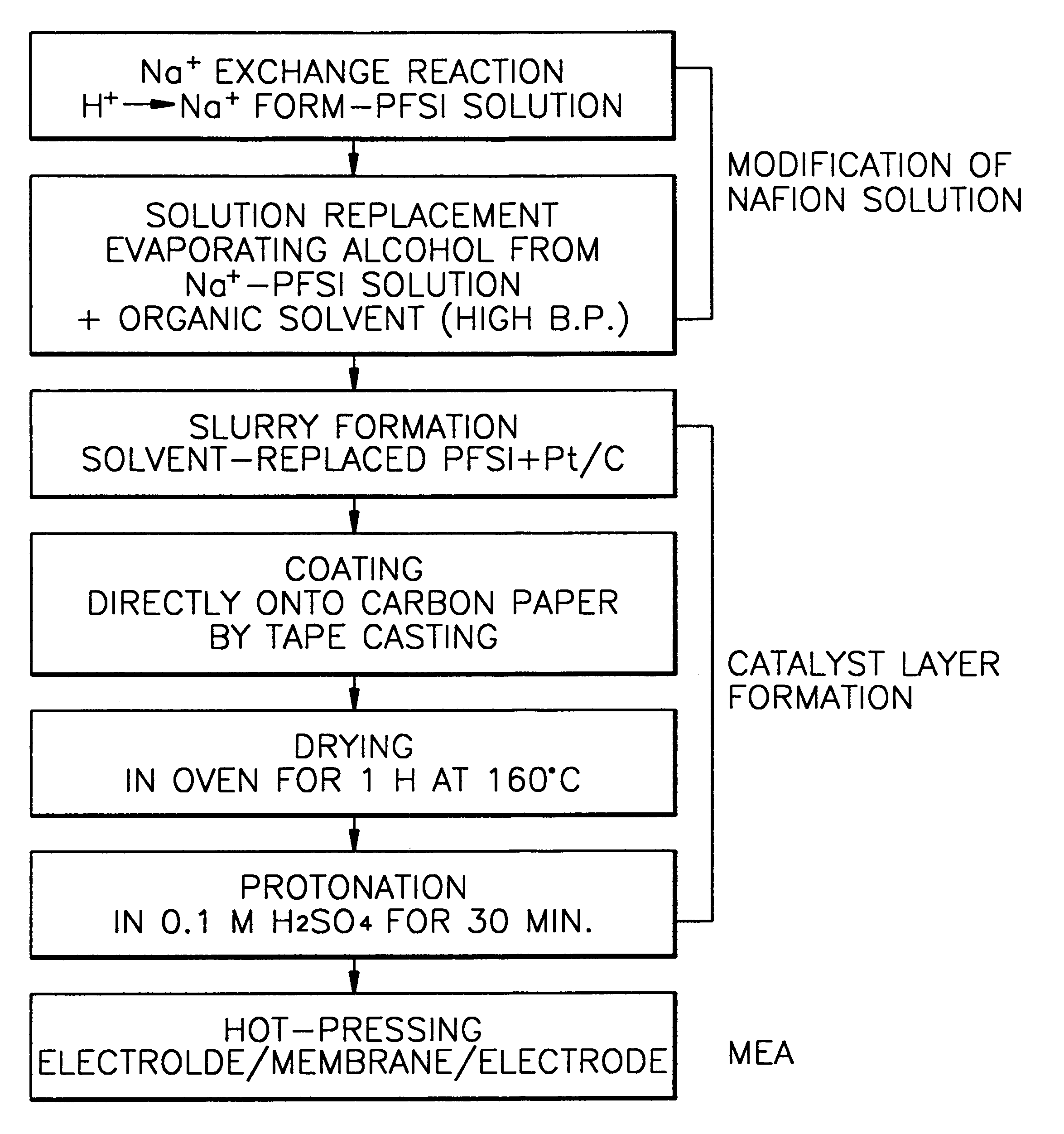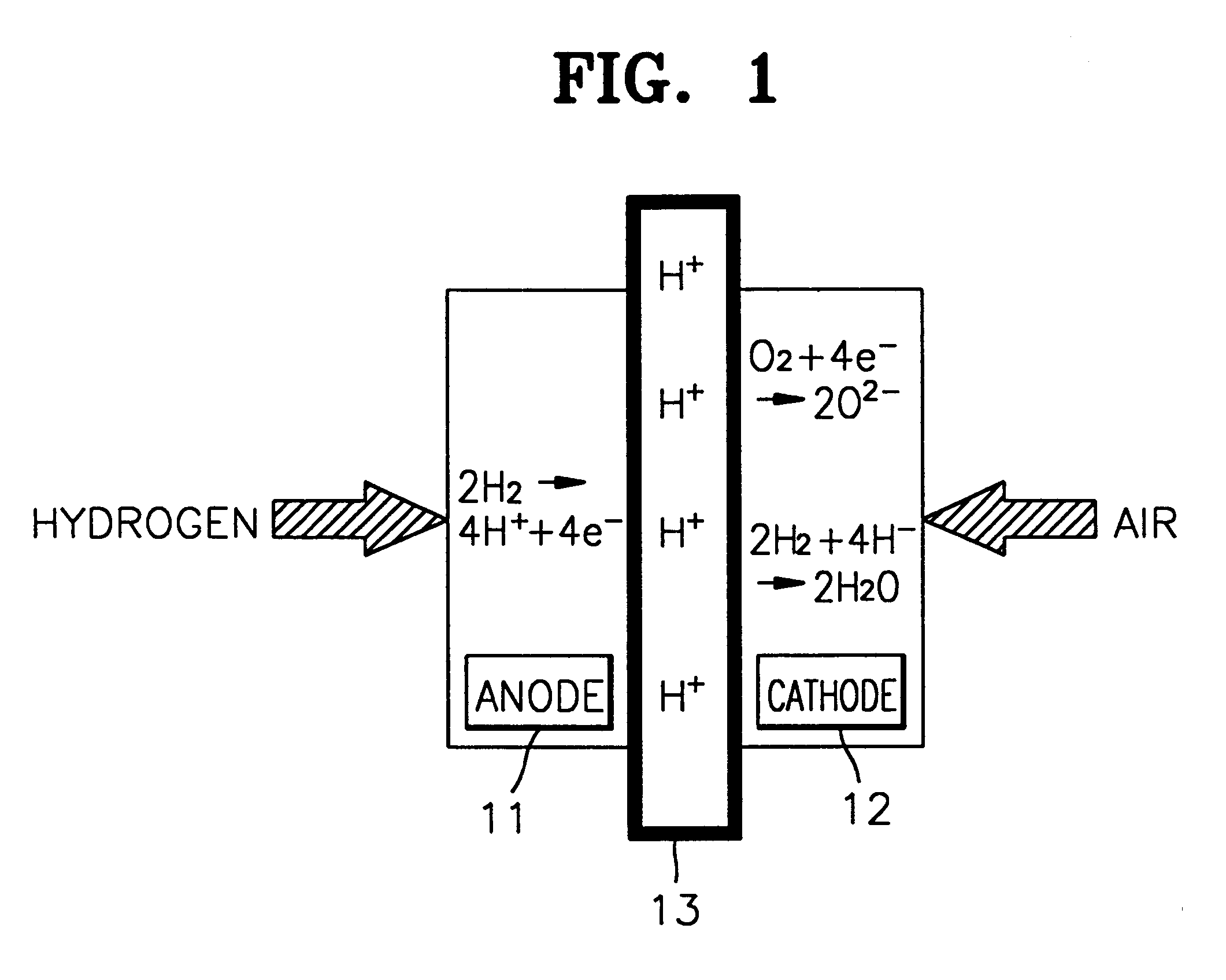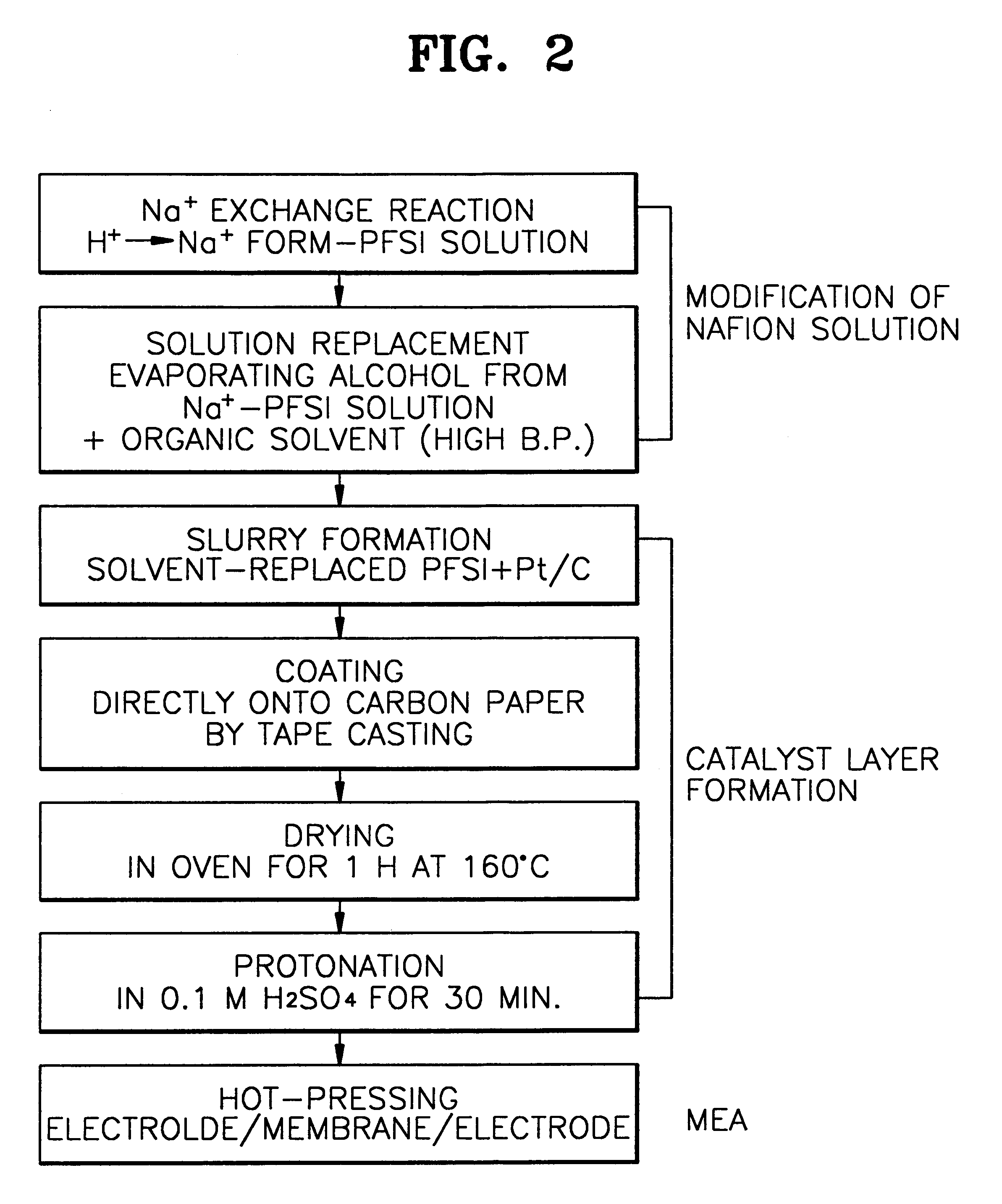Method of forming catalyst layer for fuel cell
a fuel cell and catalyst technology, applied in the field of forming catalyst layers for fuel cells, can solve the problems of reducing catalyst utilization efficiency, electrode use, and low catalyst utilization efficiency compared to liquid electroly
- Summary
- Abstract
- Description
- Claims
- Application Information
AI Technical Summary
Benefits of technology
Problems solved by technology
Method used
Image
Examples
example
To 10 g of a perfluorosulfonate solution (5% by weight, Aldrich Chemical Company, Inc), aqueous NaOH solution was added in the same equivalent ratio and stirred at room temperature for one night to convert the PFSI in the solution to a Na+form. 9.5 g of ethylene glycol was added to the thus-mixed solution and heated in an oven or an oil bath at approximately 85.degree. C. for 12 hours to remove alcohol components remaining in the mixed solution. Pt / C (20% Pt by weight, available from E-Tek Inc. under the trademark of Vulcan XC72R) was mixed in a weight ratio of 1:2, based on the weight of the PFSI in the mixed solution, and uniformly mixed using a mixer such as a ball mill to obtain a mixture in the form of a slurry. Here, the viscosity of the slurry was 3000 cp.
The slurry mixture was coated on the backing layer using a carbon paper available from E-Tek Inc., which was waterproofed with 20 wt % tetrafluoroethylene-hexafluoropropylene copolymer available from E.I. DuPont under the tr...
PUM
 Login to View More
Login to View More Abstract
Description
Claims
Application Information
 Login to View More
Login to View More - R&D
- Intellectual Property
- Life Sciences
- Materials
- Tech Scout
- Unparalleled Data Quality
- Higher Quality Content
- 60% Fewer Hallucinations
Browse by: Latest US Patents, China's latest patents, Technical Efficacy Thesaurus, Application Domain, Technology Topic, Popular Technical Reports.
© 2025 PatSnap. All rights reserved.Legal|Privacy policy|Modern Slavery Act Transparency Statement|Sitemap|About US| Contact US: help@patsnap.com



